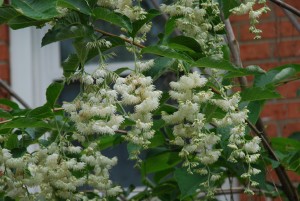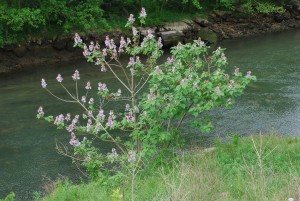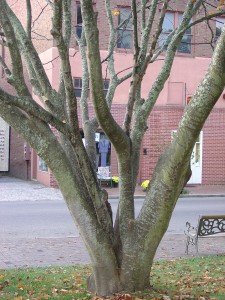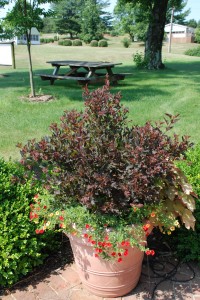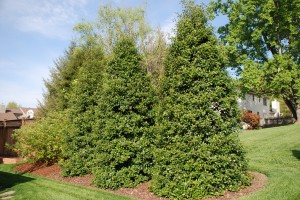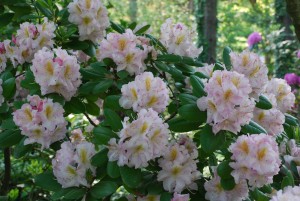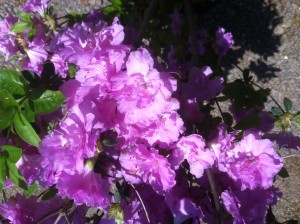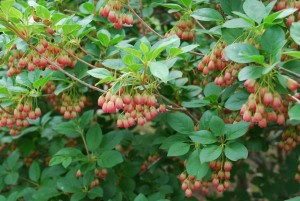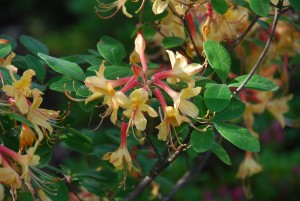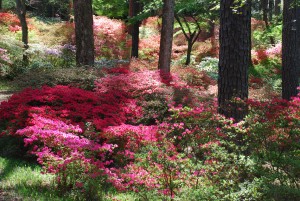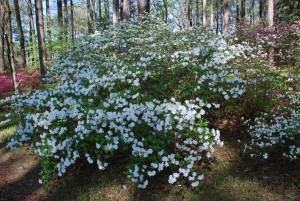Epaulette tree (Pterostyrax hispida) is a small flowering tree which quickly grows to a mature height of 20—25 feet. Winter hardiness here in the Southern Appalachian region (USDA zones 6 and 7) is no problem. A newly planted tree grows an average of 15-18 inches per year and blooms early.
Epaulette prospers in a moist well-drained soil of moderate acidity (pH 5.5 to 6.5) and in full to partial (6 hours minimum) sunlight. Established trees exhibit excellent heat and drought tolerances. Troubles with diseases and insects are not issues.
In mid- to late May, the oft-white wisteria-like floral panicles emerge, a full two weeks following the appearance of the bold 4 – 7 inch long leaves. Clusters of bell-shaped lemony scented flowers create a good showing as pendulous 5-10 inch long panicles. Many stay hidden beneath the coarse foliage canopy. Individual fringed florets measure small, 1/3 inches in diameter or less. Stringy threads of bristly seed clusters follow and persist well through the winter months, offering little in landscape interest.
Epaulette has a strong propensity to root sucker. It demands a committed gardener to steadfastly remove unwanted suckers and lower branches. Eventually, you can tame the wild epaulette into a handsome small specimen tree in garden or patio areas.

